The General Pharmaceutical Council (GPhC) published its first thematic review of registered pharmacies supplying cannabis-based products for medicinal use (CBPMs), offering fresh insight into operational standards, risk areas, and the evolving regulatory expectations facing the sector.
The review targeted 25 pharmacies known to supply CBPMs regularly (24 of which were operational at the time). Of these, 17 had CBPM supply as a core service. In the period under review, it is reported that just 10 pharmacies handled almost 98 percent of all CBPM supply in England. The sector remains niche but with rising demand.
Key Findings: Where Pharmacies Stand
- Majority meet standards: Seventeen pharmacies passed inspection across all relevant GPhC standards covering governance, premises, staffing, and service delivery.
- Non-compliance observed: Eight pharmacies failed to meet all standards. Among those, 5 had CBPM as a core service, and 3 had their non-conformities rectified before publication via re-inspection or conditions.
- 68 discrete concerns: Across all 25 pharmacies, the GPhC catalogued 68 areas of concern, reflecting that even many compliant pharmacies had scope for improvement.
- Themes of weakness: The report flags inconsistent governance (especially in risk assessment and SOPs), variable oversight of prescribing clinics, limited access to clinical or patient records, patchy medicines safety vigilance (including MHRA Yellow Card reporting), and vulnerabilities in online / distance supply pathways.
What the GPhC Highlights as Good Practice
In the more robust instances, pharmacies:
- Maintained tailored, end-to-end risk assessments covering every stage from procurement to destruction
- Enforced stringent SOPs, document control, and change logs.
- Conducted due diligence on prescribers and clinics, including regulator status checks
- Instituted formal communication lines to GPs and referrals, ensuring pharmacy interventions are documented
- Captured and actioned medicines alerts and adverse event reporting
- Monitored stock by shelf life and batch, especially given the short stability of many cannabinoid formulations
- Established safeguarding and counselling protocols adapted for CBPM products
These examples point the way toward a “gold standard” operating model in what remains a high-risk, closely watched segment of pharmacy services.
Implications for the CBPM Ecosystem
1. Raising the baseline
The GPhC’s published standards and concerns now become de facto benchmarks. Pharmacists, clinics, technology providers, and supply chain participants must align to these expectations or risk falling behind.
2. Pressures on pharmacy scale & capacity
If only a subset of pharmacies can sustainably meet all standards, supply capacity may consolidate, potentially restricting patient access or driving geographic bottlenecks.
3. Regulatory evolution
The review is likely to presage stricter inspections, deeper dive audits, and escalated enforcement in future rounds. Pharmacies that are “just compliant” may find the bar shifting upward.
4. Data, clinic integration & continuity
Many of the non-compliance gaps reflect fragmentation: absence of clinical data sharing, weak prescriber-pharmacy feedback loops, and siloed risk registers. The CTA can play a convening role here—championing standard interfaces, data protocols and shared governance models.
5. Opportunity for standardised tooling
The gaps in medicines vigilance, distance supply controls, and governance suggest a market opportunity: standard SOP templates, audit modules, alert pipelines, and system integration solutions with built-in compliance.
6. Reputational stakes
Any high-profile incident (misdispensing, adverse reaction, prescribing red flag) could now reflect poorly not just on a single provider but cast shade over the CBPM sector broadly. It is no longer a fringe space — it is under mainstream regulatory scrutiny.
What’s Next: Action Priorities
- Gap audits: Benchmark current operations against the GPhC findings and identify immediate action areas (governance, clinic oversight, data sharing, medicines safety).
- Shared resource development: The CTA may consider offering shared SOP templates, risk registers, alert registers, and training modules to elevate the baseline across the sector.
- Regulator engagement: Working dialogues with GPhC, MHRA, and CQC (clinically prescribing services) should be prioritised to understand future inspection expectations and data alignment.
- Communication & transparency: Businesses who adopt best practices aggressively should be encouraged to show that externally (e.g. via audit-ready statements) to build patient and clinician trust.
Accessing the Full Report
You can read the full GPhC thematic review “Registered pharmacies providing cannabis-based products for medicinal use (CBPM)” here:






